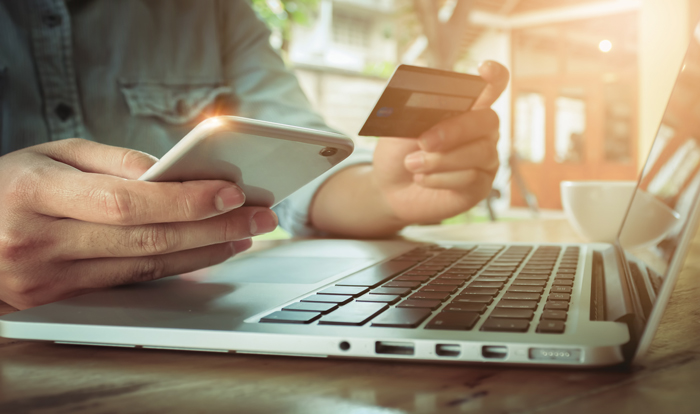“The whole is greater than the sum of its parts.” It’s been over 2,300 years since Aristotle came up with that nugget of wisdom, and while we’re certain he wasn’t talking about omnichannel marketing, his statement definitely sums up its power.
Even before the pandemic, customers used a variety of channels to complete a single transaction. Now that customers are used to things like contactless purchases, online ordering, and curbside pickup, the need for an omnichannel marketing strategy is bigger than ever.
But first, a distinction — what’s the difference between “omnichannel” and “multichannel”?
Multichannel marketing refers to having multiple channels of communication with your customers. With omnichannel, though, you build and manage all of those channels with a seamless integrated customer experience in mind. Merchants who do omnichannel right create the same look and feel everywhere, so that customers can flow among different channels, devices, and payment options, while feeling the same level of connection to your brand with each one of them.
More and more customers are starting their journey on a mobile device, meaning there are more and more opportunities there for acquisition, engagement, and loyalty. That doesn’t mean you should eliminate your physical experience or put it on the backburner, though. Instead, a great omnichannel strategy will augment the experience customers feel inside your restaurant or store.
Consider omnichannel as your way to connect the digital and physical dots so that none of your experiences are siloed. Remember, being competitive now means being exceptional. With the right omnichannel strategy — and the right technology to support it — your customers can interact with you anytime, anywhere, on as many channels or devices as they want.
This isn’t just a lesson for digital merchants, though. COVID accelerated the omnichannel need for industries that have typically always been in-person, like restaurants, retail, and grocery stores. When those merchants suddenly weren’t able to provide a physical experience, they had to pivot to a seamless digital strategy — and consumers are showing that they don’t want to pivot back. According to the 2021 Carat Insights Report, there is a surge in buy-online-pick-up-in-store (BOPIS) purchases across these specific industries:
- 60% have used BOPIS in restaurants
- 48% have used BOPIS in retail
- 44% have used BOPIS in grocery stores
Digital wallets are surging in popularity across all industries, with a 394% increase in usage as of early 2021. Plus, a whopping 26% of consumers have made a purchase through a QR code, which emphasizes consumers’ ongoing interest in contactless payments.
The bottom line for your bottom line? The more advanced your omnichannel strategy is, the less friction there is to buy from you. After all, “do nothing” is often your biggest competitor. If your app is too difficult to navigate, a customer may just choose to make their own quick lunch. Or, if your email doesn’t make it clear how to actually redeem the BOGO offer you’re giving out, a customer may decide not to buy anything from you at all.
As an added benefit, omnichannel opens you up to a whole new world of data possibilities. The more touchpoints you have, the more opportunities you have to get zero- and first-party data about your customers so that you can refine your segments, advance your personalization, and have more insights to help you create lookalike audiences.
If you want to gauge your current omnichannel maturity, ask yourself these questions:
1. How coordinated are your channels?
Are you providing the exact same look and feel everywhere? Remember, customers don’t see it as siloes of email, SMS, in-app, in-store, etc. Instead, they see it all as “your brand.”
2. Do you manage and optimize channels singularly or as a whole?
Are you taking key learnings from one channel and applying them to the others? If you’re getting fantastic data insights from one channel, are you using them to optimize everything else? And if one channel isn’t working, are you evaluating it as part of the entire customer journey or in a vacuum?
3. Do you specifically target new segments through different channels?
This is the one time where your channels can be slightly siloed because different channels attract different types of people. The customers who engage with you on social media might be totally different than the customers who engage with you via email. If, for example, Gen Zers make up the bulk of your social followers, create retargeting ads that apply specifically to that segment. This won’t take away from your seamless integrated experience, but it will maximize the segments you really want to reach on each channel.
4. Do you make decisions based on data?
Like we mentioned above, omnichannel gives you all kinds of avenues to gather data. However, those insights need to be just as integrated as your channels. If your current technology forces you to analyze data in a silo, you need a solution that can bring everything together so that you can see the holistic picture.
5. Can you react instantly?
Speaking of technology, it can help you keep up with the always-on, instant-gratification mindset of today’s consumers. For example, being able to instantly send out next-best communications or instant win-back offers can go a long way towards creating that truly seamless experience your customers want.
Overall, an omnichannel marketing strategy can give you the power to automate processes, collect more advanced data, and lessen friction to purchases — all while also giving your customers a 1:1 experience. That’s why it’s firmly in the driver’s seat on a brand new path to a stronger, more loyal customer base.

